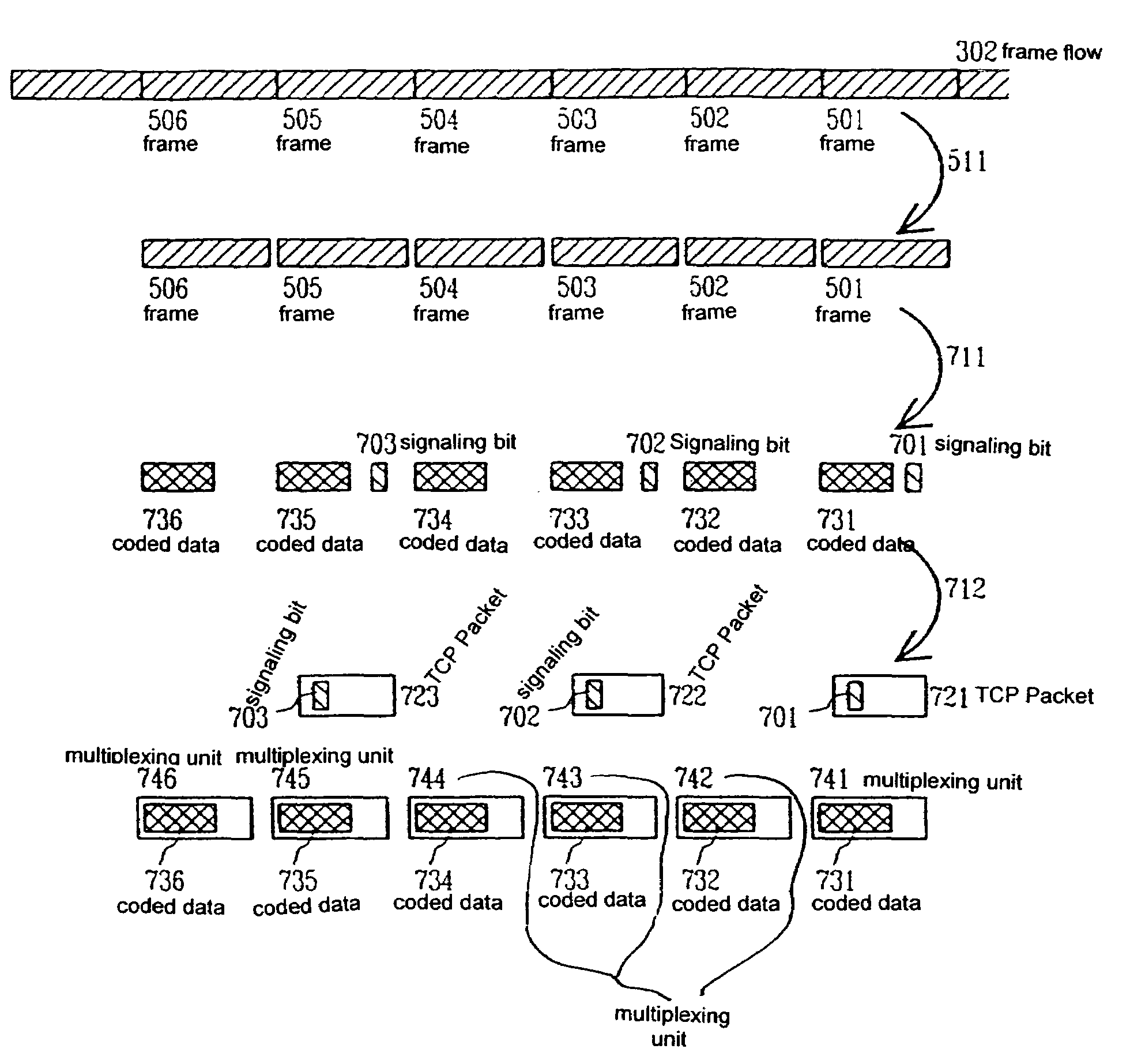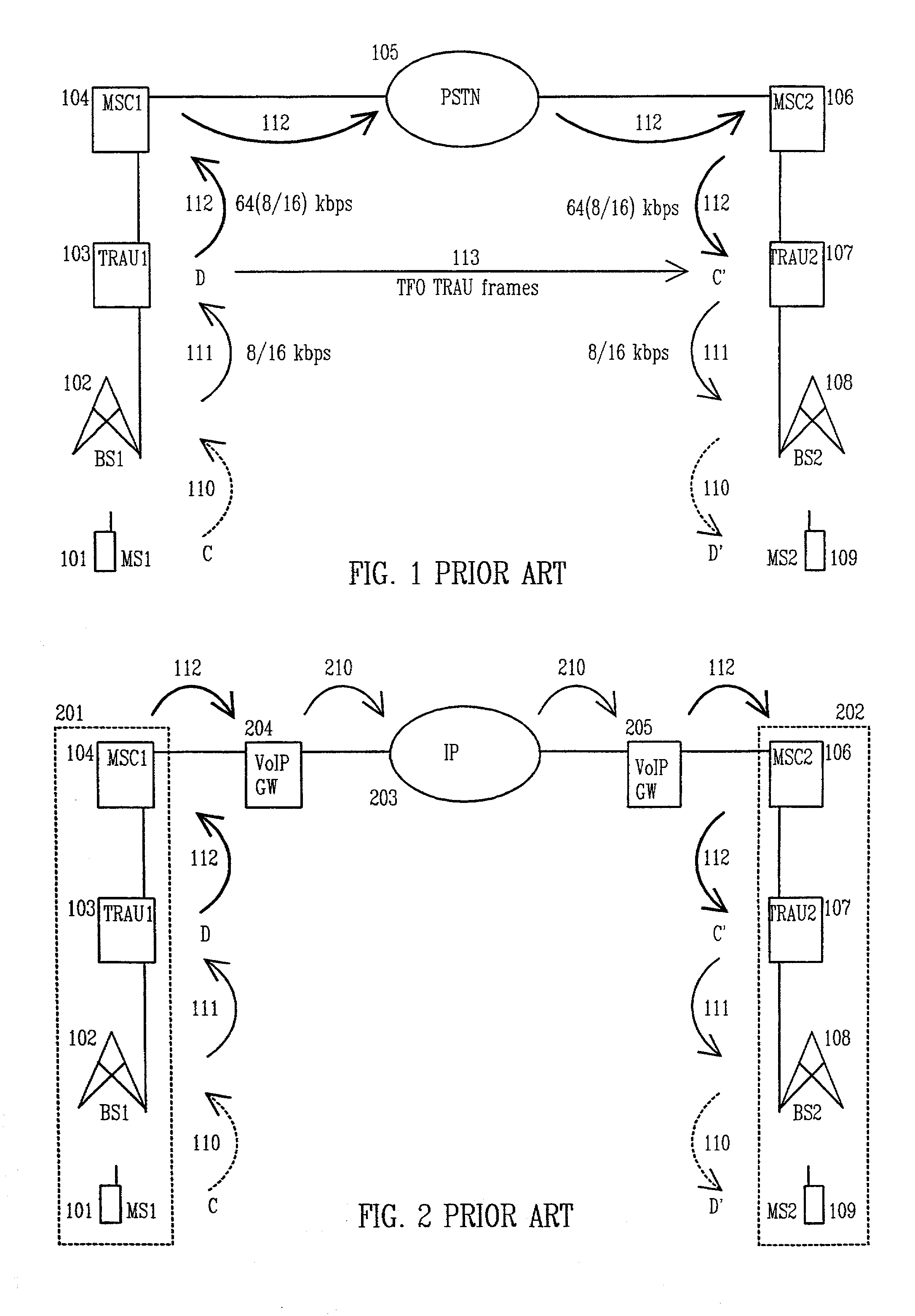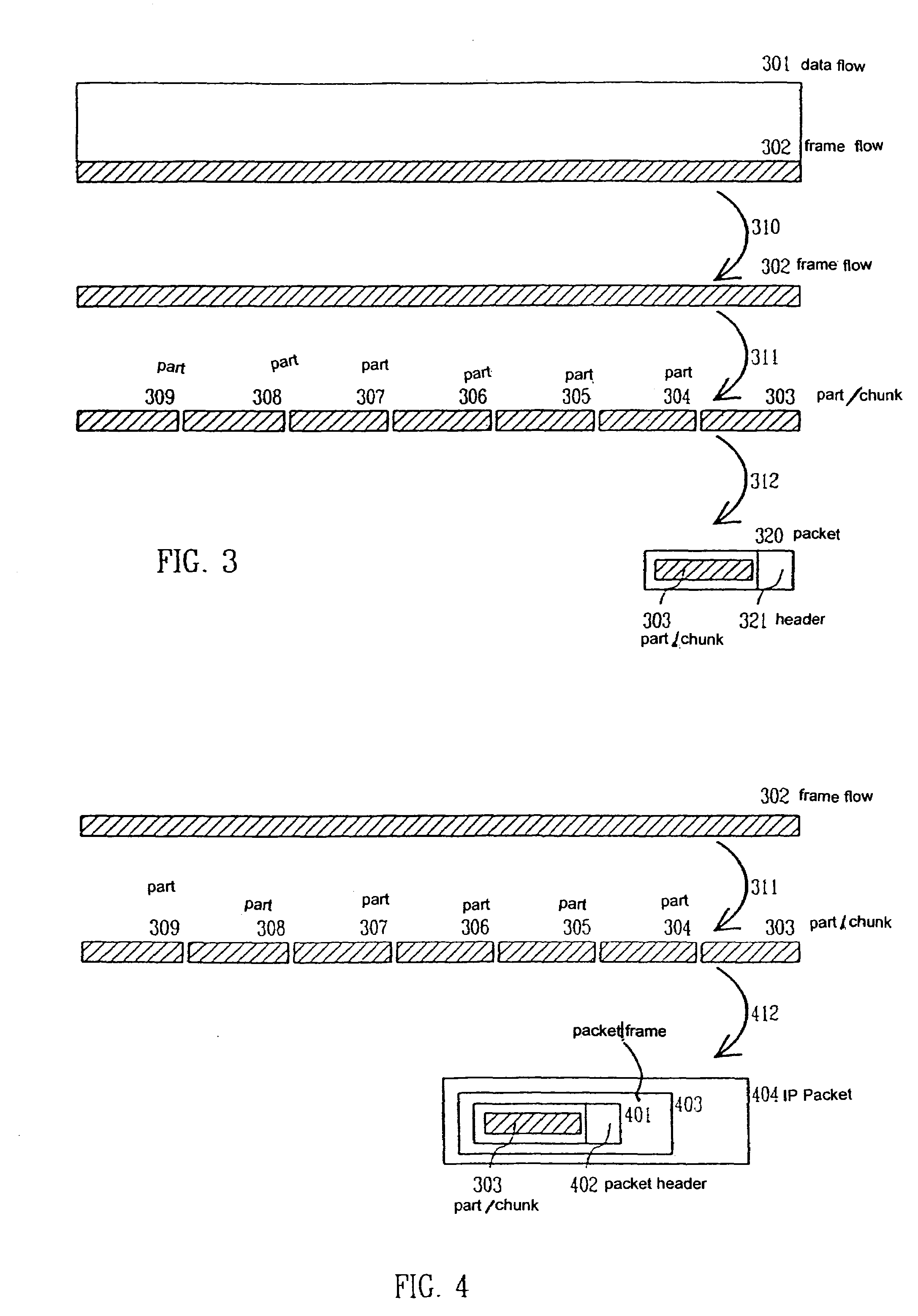Method for transmitting calls over packet network
a packet network and call technology, applied in data switching networks, multiplex communication, wireless communication, etc., can solve the problems of deteriorating the quality of speech, traus involved in the call may not support tandem free operation, and explosive growth of real-time data applications, so as to improve the quality of transmitted data and save processing power.
- Summary
- Abstract
- Description
- Claims
- Application Information
AI Technical Summary
Benefits of technology
Problems solved by technology
Method used
Image
Examples
Embodiment Construction
[0059]The GSM system, TRAU frames and TFO TRAU frames are here used as examples when describing the preferred embodiments of the invention. TFO TRAU frames are transmitted between the transcoder and rate adaptation units as part of the PCM signal. The TRAU frames may be any frames that carry coded data in a cellular network, and TFO TRAU frames any frames that carry coded data between coding-decoding units.
[0060]In a method according to a first preferred embodiment of the invention all information from the TFO TRAU frames is transmitted to the second gateway. FIG. 3 shows in the upper part the uplink data flow 301 that enters the first gateway in, for example, PCM form. Certain part of the data flow, usually the one or two least significant bits of each speech sample, is used to carry the TFO TRAU frames, and FIG. 3 presents this TFO TRAU frame flow 302. First, the TFO TRAU frame flow is separated from the rest of the PCM flow, which carries, for example, the decoded data. The separ...
PUM
 Login to View More
Login to View More Abstract
Description
Claims
Application Information
 Login to View More
Login to View More - R&D
- Intellectual Property
- Life Sciences
- Materials
- Tech Scout
- Unparalleled Data Quality
- Higher Quality Content
- 60% Fewer Hallucinations
Browse by: Latest US Patents, China's latest patents, Technical Efficacy Thesaurus, Application Domain, Technology Topic, Popular Technical Reports.
© 2025 PatSnap. All rights reserved.Legal|Privacy policy|Modern Slavery Act Transparency Statement|Sitemap|About US| Contact US: help@patsnap.com



